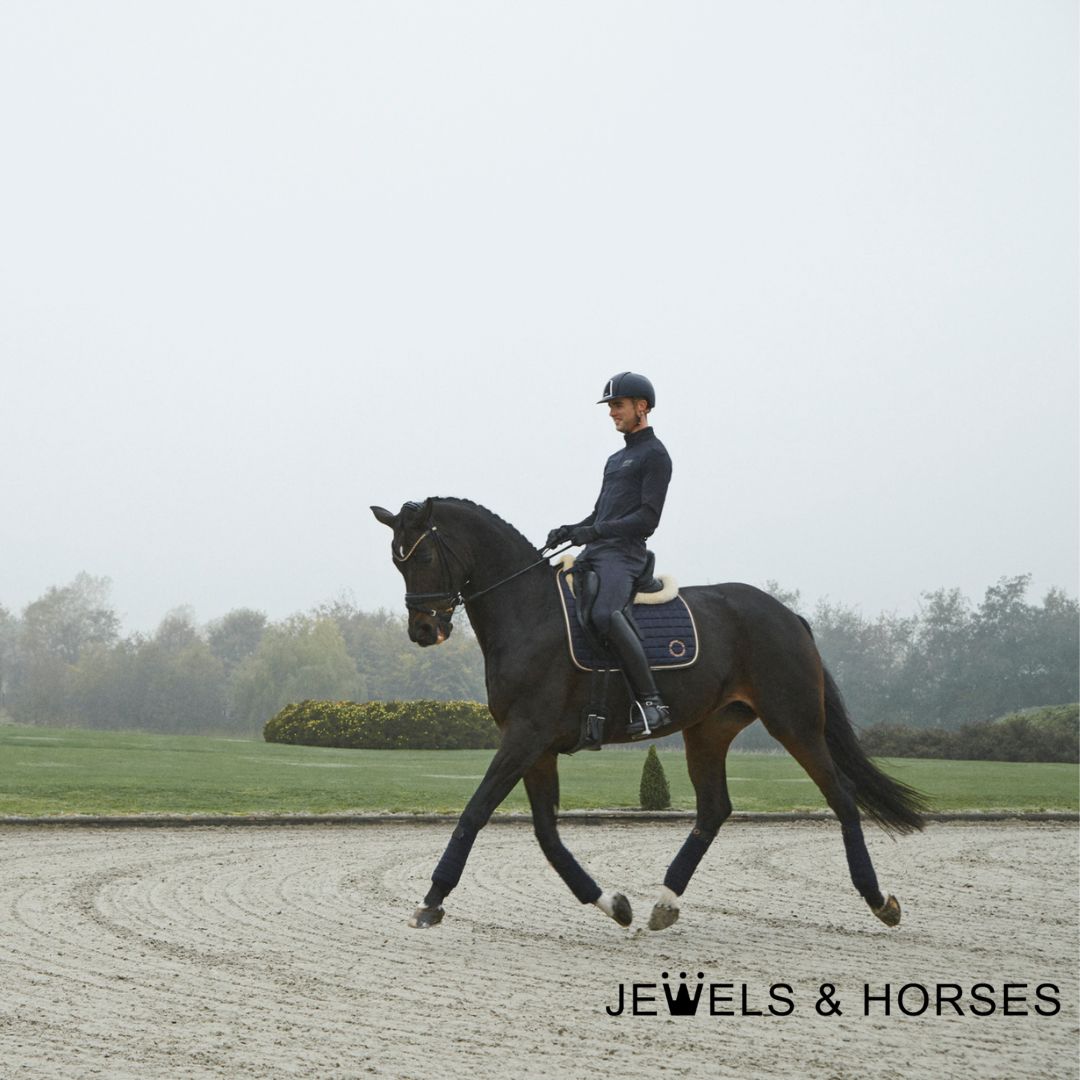Elevate Your Dressage: Effective Exercises to Master at Home

Dressage is often referred to as "horse ballet" for the precision and grace it demands from both horse and rider.
While dressage training typically takes place in the arena, there are numerous exercises you can practice at home to enhance your dressage skills.
In this blog, we'll explore some of these exercises that will help you develop a deeper connection with your horse, refine your aids, and improve your overall performance in the dressage arena.
1. Groundwork and In-Hand Exercises:
-
Leading and Leading Changes: Practice leading your horse in hand while maintaining a correct and consistent pace. Work on smooth, balanced transitions and maintain straightness.
-
Lateral Work: Teach your horse in-hand lateral movements such as shoulder-in, travers, and half-pass. These exercises improve your horse's suppleness and responsiveness to your aids.
2. Balance and Collection Drills:
-
Pole Work: Set up ground poles to practice transitions and collection. Ask for your horse to step over the poles with precise, collected movements.
-
Transitions Within Gaits: Work on smooth, controlled transitions between trot and canter, and within the gaits themselves, such as transitions from working trot to collected trot.
3. Riding Dressage Figures:
-
Figure Eights: Practice riding figure eights and serpentines to improve your horse's bending, balance, and responsiveness to your aids.
-
Circles and Spirals: Work on maintaining perfectly round circles and then spiral in and out to refine your horse's collection and balance.
4. Straightness and Connection:
-
Centerlines: Use a centerline or rail to practice maintaining straightness and a consistent rhythm during your trot and canter work.
-
Riding Without Stirrups: Ride without stirrups to improve your balance and seat, which are crucial for achieving a deep, harmonious connection with your horse.
5. Transitions and Paces:
-
Extended and Collected Transitions: Practice transitions from extended to collected paces within the same gait. This will enhance your horse's responsiveness and improve his ability to shift balance.
-
Walk to Canter Transitions: Work on smooth and prompt transitions from walk to canter to develop your horse's readiness to perform these transitions during dressage tests.
6. Rider Aids and Position:
-
Upper Body Control: Concentrate on your upper body position. Keep your shoulders aligned with your horse's shoulders and practice isolating your hips and seat from your upper body.
-
Leg Aids: Refine your leg aids. Focus on using your legs independently to ask for specific movements or changes in pace.
7. Visualization:
- Imaginary Dressage Tests: Visualize yourself riding a dressage test at home. Go through the entire test in your mind, emphasizing accuracy, rhythm, and harmony with your horse.
8. Review Videos:
- Record Your Riding: Record your dressage training sessions and review the videos. Analyse your position, your horse's performance, and your use of aids.
9. Dressage Letters and Geometry:
- Set Up Letters: Create a mini dressage arena in your home or riding space with markers or cones. Use this setup to practice accurate geometry and transitions at specific letters.
10. Flexibility and Stretching:
- Stretching Exercises: Incorporate stretching exercises for both you and your horse to improve flexibility and suppleness.
While these exercises can be beneficial for enhancing your dressage skills at home, regular training with an experienced dressage instructor is essential. They can provide guidance, offer corrections, and refine your technique. With consistent practice, you can further develop your partnership with your horse and excel in the art of dressage, no matter where you are.




